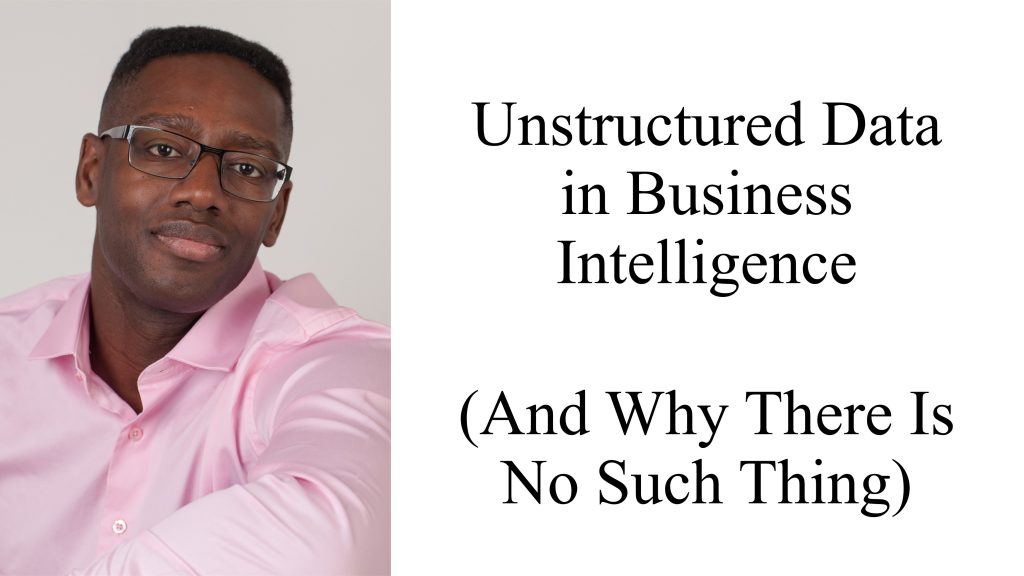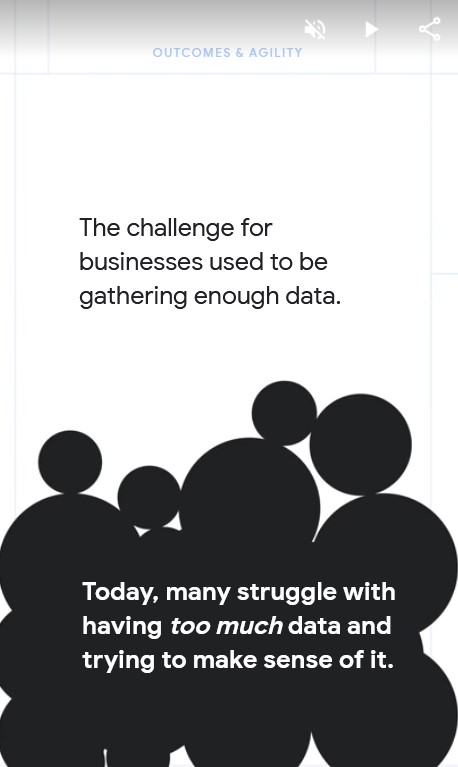
If you’re new to using unstructured data in business in business intelligence, great! I think what I’ve prepared for you is a good foundation for learning this important, overlooked aspect of business.
I like to start with definitions.
Data, to me, is a small bit of something that can (hopefully) be combined with something to become what we call information.
For example, each letter I’m typing, on its own, can be thought of as data. When combined with the other letters in a recognizable pattern (words, phrases, sentences, etc.) that combination of data becomes information.
And with enough information, or if we look at the information correctly, we can derive meaning.
But what if that data isn’t structured, or we can’t read it in a way that we can derive information or meaning from?
I’ll get to that soon enough.
The video below, by Bernard Marr of Bernard Marr & Co., gives good definitions of structured and unstructured data.
So, as Marr says, unstructured data is data that we (seemingly) can’t put into a neatly, organized spreadsheet, chart, numerical order, syntax, or some type of categorization that makes sense to us.
To that, I’d like to add something interesting to this notion of unstructured data, and what I’d like to add comes from chaos theory: “Chaos theory states that within the apparent randomness of chaotic complex systems, there are underlying patterns, interconnectedness, constant feedback loops, repetition, self-similarity, fractals, and self-organization.”
Unstructured data is only unstructured because we don’t see a meaningful pattern.
I’m about to say something that I hope you find meaningful:
Yes, that statement is structured (there’s that word again) from the saying, “One man’s garbage is another man’s treasure.”
And why do I say that?
Because the challenge of unstructured data is not that the data is unstructured.
Remember: unstructured data is only unstructured because we don’t see a meaningful pattern in it.
In fact, if you can really understand this on a deeper level, there really is no such thing as unstructured data.
There are only data, but because we don’t see the pattern to it, it looks unstructured.
In fact, here’s an example: you’re not really reading what I’m saying.
Instead, you’re scanning your eyes across bits of data (letters), and because you can recognize a pattern (English spelling, grammar, word order, etc.) you can make sense of this string of letters I’m typing.
Now, let’s consider someone who doesn’t have a frame of reference to recognize the pattern of letters I’m typing. That person may be someone who, for whatever reason can’t see the pattern here. Maybe this person doesn’t read or understand English.
Well, if a person doesn’t understand a language, they’re not going to be able to see the pattern of letters that language uses.
Same for so-called unstructured data. It’s only unstructured because we don’t have a framework or recognize a pattern in it.
So, the next question is, how do we see the structure in this so-called unstructured data?
A few hours ago, I saw this tweet from the Google Analytics Twitter channel:
That tweet links to this Think with Google web story: Route to Ready (you can click the “X” in the corner of the interactive feature to go to the actual content page).
When I was glancing through the interactive web story, I came across this…

And then, I eventually made a link between the struggle to make sense of too much data and the notion of unstructured data.
I did some research, and came across Marr’s article on Forbes: What Is Unstructured Data And Why Is It So Important To Businesses? An Easy Explanation For Anyone.
(Now, you might be wondering why I’m linking to an article on unstructured data when I argue that there is no such thing. Well, it’s a matter of perspective: what seems unstructured/unpatterned becomes structured and with a definite pattern…when you know how to see the pattern. Remember chaos theory.)
And this is where artificial intelligence and machine learning come in. And in this regard, particularly from a business context, Google is an emerging leader.
With Google’s business systems and platforms (Analytics, Marketing Platform, Data Studio, and others) efforts are being made to find structure in seemingly unstructured data.
This is especially true with the increased privacy regulations that digital marketers are under. Due to the increased desire for consumer privacy, marketers can’t gather the unfettered, unbroken data they need to traditionally acquire the consumer information that they used to.
So, now there are “gaps” in the data marketers can gather, and those gaps make our data a bit…unstructured.
Well, with advancements in marketing analytics and machine learning, complex algorithms can now help fill in the “gaps” in our data (unstructured data). When those gaps are filled, we can see a bigger picture.
And, when we see a bigger picture (previously unstructured data that’s now seen structurally) we get information.
With enough information or intelligence, we can find meaning.
And with enough meaning, we can gain insights and make proper decisions.
That’s how, when it comes to unstructured data in business intelligence, if we can somehow see the pattern in the seemingly unstructured, we can ultimately gain meaning, insight, make proper decisions, and gain a competitive edge.
That’s why it’s the marketer who can see the structure in the unstructured can gain incredible insights. It’s why one marker’s unstructured data is another’s structured data.
Source: Google Analytics Twitter channel